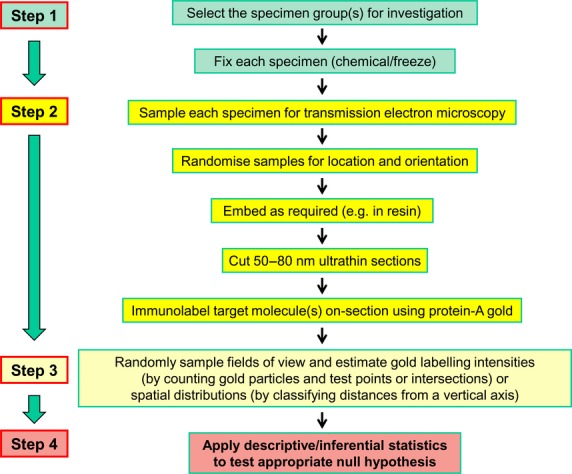Figure 5.

Workflow for a study involving stereology, TEM and post-embedding immunogold cytochemistry. Four main decision steps are identified in a multistage cascade sampling scheme followed by quantification. From the group(s) to be studied, a set of specimens is selected and these might be replicates of cell cultures, cells isolated from bodily fluids or whole cells removed from some tissue/organ (Step 1). Next, the specimen is prepared for examination by the chosen imaging technique (Step 2). With immunoEM, this involves fixing, embedding and sectioning specimens for TEM and then on-section labeling for immunogold cytochemistry. The steps may involve further sub-sampling of the specimens and randomisation of section location (SUR sampling) and orientation (IUR sampling). Finally, the method of quantification is chosen (Step 3). For immunoEM, this could involve using stereology to count (i) gold particles, (ii) test points and/or (iii) intersections between test lines and membrane traces. Again, these have random sampling requirements in terms of location and orientation. Finally, data handling involves using appropriate descriptive and inferential statistics (Step 4). Similar workflows can be adopted for other imaging modalities including electron tomography and micro-CT.
